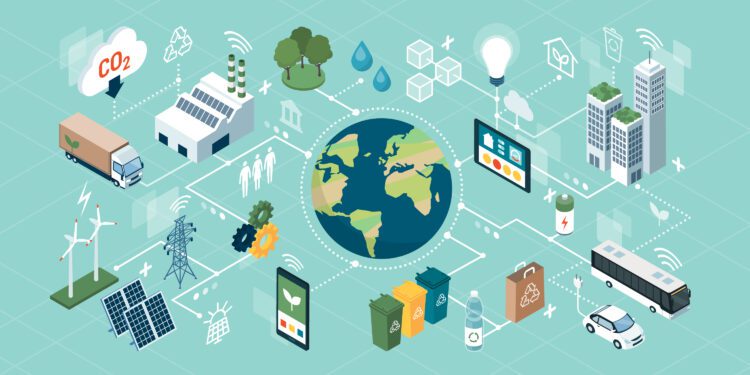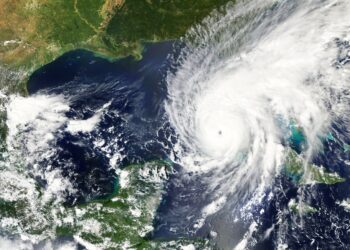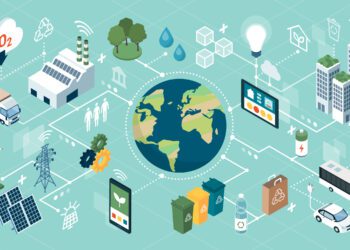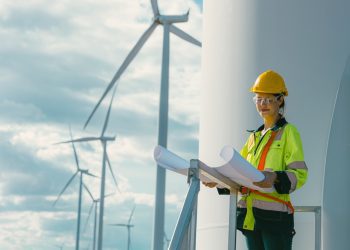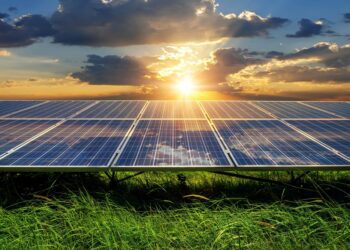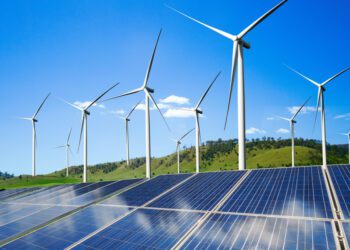Limitless renewable energy would offer tantalising benefits: emissions-free heating, greener fertiliser and electric transport. But overcoming the obstacles will not be easy.
What would we do with an abundant, cheap, inexhaustible supply of renewables?
Perhaps the desalination of seawater, suddenly cost-efficient, would relieve Earth’s water shortages. Rubbish might be recycled on a massive scale, allowing for the extraction of precious trace elements such as rare earth metals, while carbon dioxide (CO2) could be vacuumed out of the atmosphere to slow climate change. People could live comfortably in Earth’s polar regions or travel far and wide in battery-powered vehicles. Goods and services that require electricity might become cheaper, even free. Our emissions footprint could soon be undetectable.
While exciting to contemplate, this sustainable world would be incredibly costly. It would also hinge on a wide range of political, economic and technological factors to ever make it a reality.
Green energy’s success depends on people’s willingness to adopt the technology in the first place – renewable alternatives would have to promise more convenience, speed, savings and security than the oil, coal and gas on which we’ve grown so reliant. Lawmakers would also need to combat legislative gridlock to ensure that sustainable energy policies could be implemented. The facilities that combust this green energy – be it solar, wind, geothermal, biomass, or even nuclear fusion or some undiscovered technology – would need to be built and maintained as the planet continued to warm and resources dwindle.
And assuming these obstacles could be overcome, how could limitless green energy change our own consumption, innovation, our economy, public policy and the environment? And what factors might make this hypothetical planet temporarily worse off?
According to the International Energy Agency (IEA), electricity demand is set to grow by 40-60% in some regions in the next 10 years. Researchers predict that mounting prosperity in both the developed and the developing world will continue to drive increased consumer demand for key resources up to at least 2040. At the same time, constraints in energy, water and other natural resources will bring about new and difficult-to-manage instabilities.
Current electricity generation – primarily by fossil fuels – is the single biggest contributor to climate change, responsible for 30% of all greenhouse gas emissions.Green energy could thus represent a radical deviation from business-as-usual, promising a path towards zero-carbon emissions and international energy independence. Without the concerted efforts of policymakers, investors and citizens, however, limitless green energy could also lead to a world of increased waste and shortages.
“Green energy may be limitless, but certainly not limitless without cost,” says Victor B Flatt, professor of environmental law and head of the Environment, Energy and Natural Resources Legal Center at the University of Houston. From the enormous capital outlay required to build renewable power plants – or convert existing ones – to the marketing investments needed to incentivise its use to the emissions-emitting extraction processes needed for new infrastructure, free green energy comes at a high price.
There are no perfect answers. What will be required in the years ahead is a diverse and flexible mix of energy solutions – what Bill Gates calls a “Swiss army knife of energy tools.”
Carbon-free energy certainly promises tantalising benefits: total electrification of transport, emissions-free heating and cooling systems to power our homes and businesses, greener fertiliser for our farmlands. If we can manage to produce it, we might also need to use supplementary sources of fusion power. Developing efficient and sustainable methods of burning biomass, and converting methane from crops and sewage, would help to increase our green fuel supply, but we would also need to reduce our total energy and explore ways to turn climate policy into concrete, enforceable action.
As parts of the world begin to wean off fossil fuels, our current fuel supply would become cheaper and cheaper, says Flatt. Oil-rich countries, eager to sell their last barrels to developing nations, would drive the price down further, slowly eliminating liquid-fuel economies. “If green energy is more competitive than fossil fuels, people will move in that direction,” says Flatt. “But real-world constraints will start to take over.”
Traditional power plants will play a smaller role as decarbonisation objectives and national mandates require their reduced use. Simultaneously, a robust infrastructure of variable renewables plants will become absolutely crucial. These plants will need to be built over a large geographical area in order to ensure minimal power interruption – if it’s a grey, windless day in Dublin, electricity might need to be channeled from as far away as Oslo, for example. This boom in manufacturing will likely lead to stable, long-term job creation – a net positive – but could also mean temporary job losses in other sectors, such as coal.
Another formidable constraint is that green energy is notoriously unreliable. Hydropower requires enough rain to propel a constant supply of flowing water and can wreak havoc on native aquatic species and their ecosystems. Solar photovoltaic panels need clear skies and sunshine to harness photons of light required to generate electricity.
Variable renewables are power generators that depend on the availability of intermittent resources; they therefore require complementary technologies to ensure that the balance between supply and demand is maintained at all times – even during seasonal changes or worst-case scenarios. Limitless green energy would almost certainly give rise to innovative methods to use and store energy cheaply and efficiently, but creating a permanent surplus of power may not be economical at scale.
…
The issue is less about overconsumption, which tends to describe exhaustion of a resource, than growth of consumption because the resource is abundant in the first place. There would be enough of the resource available overall, but this abundance may lead to new problems. This phenomenon has historically characterised other resource cost decreases: when we made food cheap and abundant by learning how to process and manufacture it at scale, we developed an obesity crisis. When we devised ways to produce cheap plastic, the oceans were suddenly choked with our single-use bags and bottles. Could a similar pattern emerge if we make green energy abundantly cheap?
Switching to renewable power worldwide could alleviate our climate change crisis, bringing about new forms of innovation and commerce in the process. That might free up time and labour to devote to leisure and other pursuits. But we need to remain realistic. “This solves some problems,” says Flatt, “but it’s not a Nirvana.”
By Adrienne Bernhard.
Full article available here.

